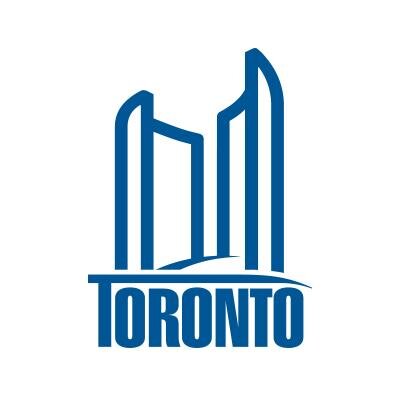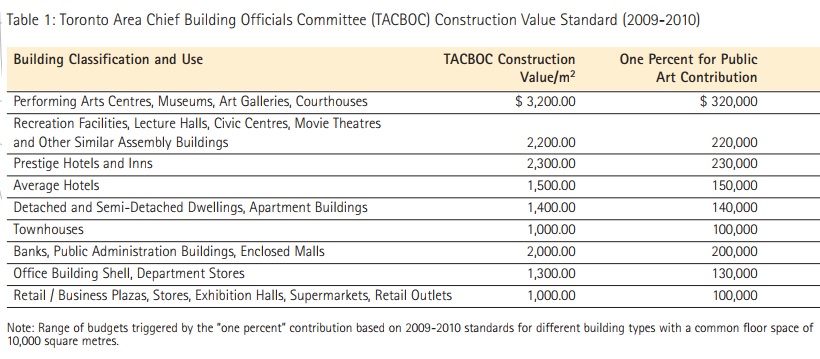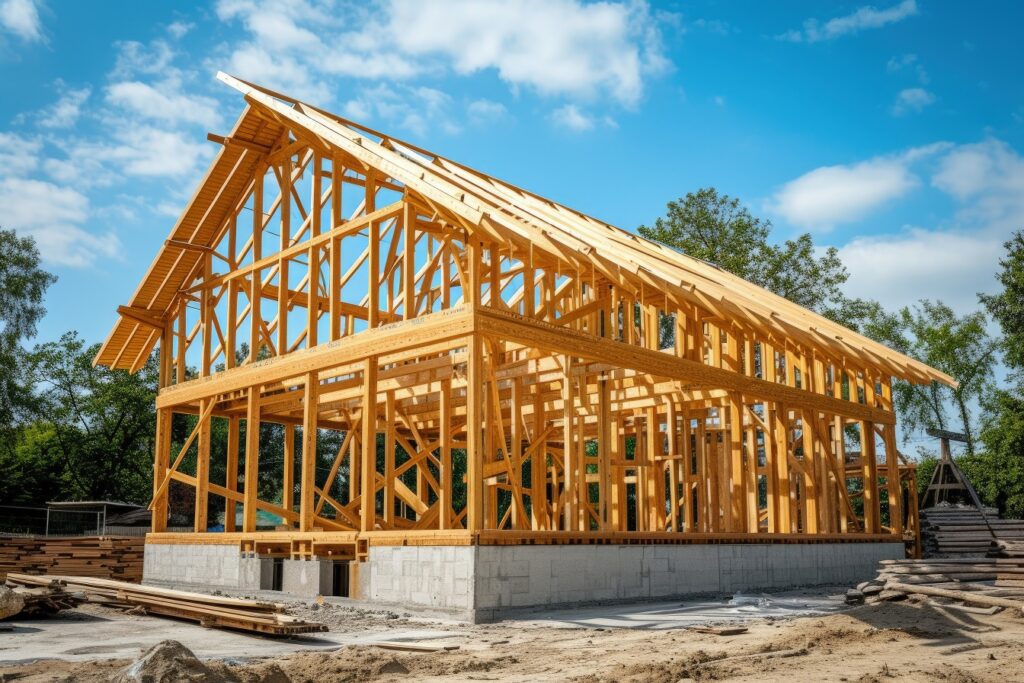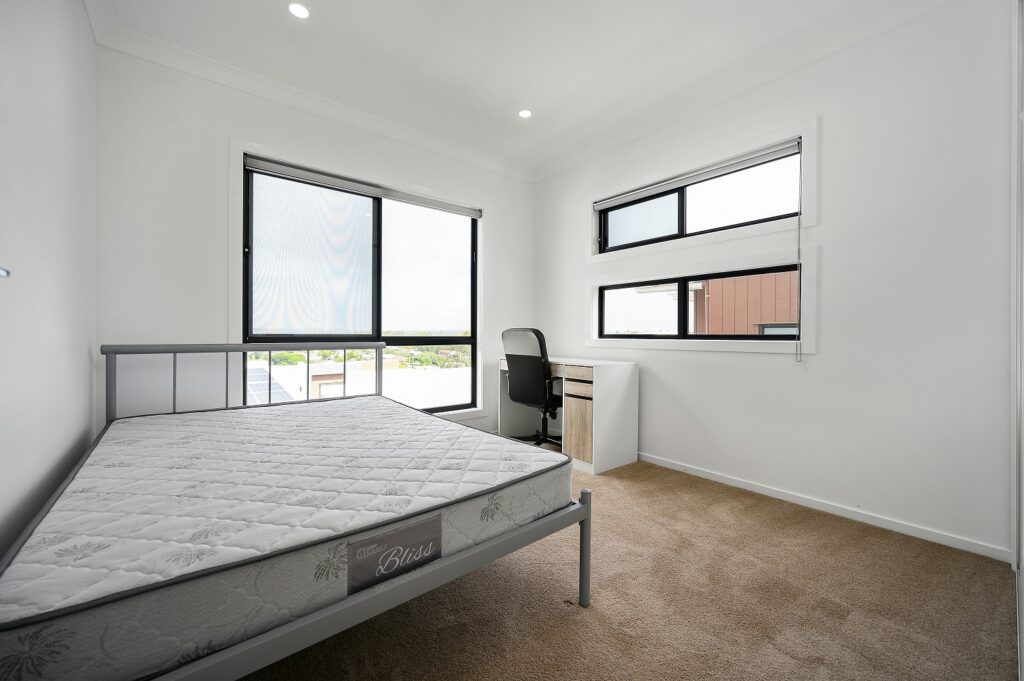Well, if you read Wednesday’s blog, you’ll probably know it’s the answer to Wednesday’s blog question: “What’s the origin of the art in front of Toronto condos?”
Alas, developers aren’t commissioning for the creation of art on their own.
They’re being forced to.
For those of you that thought people do good things of their own free will and desire, sorry to burst your bubble on a Friday…

You just had to know this was coming, right?
The entire impetus for this blog post was a friend asking me, “How come so many condo developers are incorporating art into the design of their new buildings?”
Um, they’re not. Not by choice, anyways.
As with many things in life today, you can file this under the category of, “We’re doing it because the government is telling us to.”
Toronto’s “Percent For Public Art Program” was implemented in 2010, but the idea of incorporating art into city buildings dates back decades, from what I’ve read about the subject.
The origin can be found in Section 37 of the Planning Act, which permits the City to authorize increases in permitted height and/or density through the zoning bylaw in return for community benefits.
Now do you see where this is going?
We often hear people muse things like, “…I’m sure city will let the developer build double the height of any neighbouring building, so long as they build a parkette outside.”
I’ve heard cynics say, “…so the developer got permission to build a tower 40% higher than the bylaw states, because he included three subsidized housing units in a 400-unit condo?”
Give it five minutes, and I’m sure you could think of five other similar examples.
The words “in return for community benefits” have massive implications.
Out of Section 37 of The Planning Act came “The Percent For Public Art Program,” which you can read at your leisure by clicking that link; all 40 pages of it.
The name comes from the idea that if you earmarked just one percent of the cost of construction of a condominium for art, the city would be a brighter, better, more beautiful place.
Okay, those are my words.
But I think “bright, better, beautiful” are in line with the thinking of many of today’s politicians – maybe the same ones who put picnic benches on the road on King Street, in what used to be a lane of traffic. But that’s a topic for another day. A day, next year, when we say, “Wow, has it been a year already?” upon the “pilot project” becoming official…
Cynical? Yes.
But let’s not forget that not every idea the City of Toronto has, is one that makes sense…

The first page of the Percent For Public Art Program gives us this nugget:
“Public art installations, both publicly and privately owned, make walking through the City’s streets, open spaces and parks a delight for residents, workers and visitors alike.” SECTION 3.1.4 TORONTO OFFICIAL PLAN, 2002
As I said, the entire concept of public art pre-dates the 2010 program.
So now comes the mission statement:
High quality public art is important to the enhancement of Toronto’s urban fabric. Public art has created landmarks throughout the city and already contributes to the identity and character of many of our neighbourhoods and districts. The City of Toronto has a broad definition of public art that provides artists with a variety of opportunities to enrich the urban environment. Public art can be unexpected moments of beauty, amusement, reflection or intrigue. These works of art might serve as monuments or memorials or represent other creative, innovative and exploratory ideas or expressions for the area. It is widely recognized that public art has the ability to boost economic development and tourism by making destinations for visitors and local residents. The next wave of city building brings with it the exciting opportunity of securing new public art installations across Toronto.
–
You can agree, or disagree.
As I wrote in Wednesday’s blog, we all have a different idea of what “art” is, and we all have a larger or smaller place for it in our lives.
When it comes to public money, however, we deserve to know what’s going on, and we will all have an opinion on effectiveness and necessity of government expenditures, hence my inclusion of the rubber ducky…
So now comes the rationale:
–
The feasibility of an on-site public art program is governed, in part, by the available funding. Due to the size of contribution generally required to implement an effective public art program, on-site public art installations are primarily suited to larger-scale development (refer to Appendix 1: Budget Examples).
These guidelines recommend the “one percent for public art” model. This recommendation is based on common practice found within numerous successful public art programs in North America, Europe and other countries around the world. It is the “tried and true” target that enables the public art to have impact on the site in relation to the other 99% of the building budget.
Specifically, the recommended minimum public art contribution for a development should be based on one percent of the gross construction cost (GCC) of that development. To obtain a standard estimation for the GCC value, the calculation is to be derived from the most recent release of the Toronto Area Chief Building Officials Committee’s (TACBOC) Construction Value Standard (refer to Table 1 for examples of contribution calculations). The TACBOC schedule reflects the average construction cost by building type within the Greater Toronto Area and is the accepted method of calculating construction costs related to the issuance of building permits within the City of Toronto.
While a minimum value of 1% of gross construction costs is recommended for public art in development projects, that target may not be achievable on every project. In a large project, an on-site public art program with a value of less than 1% of gross construction costs may be feasible or appropriate. In other smaller projects, a cash contribution towards off-site public art may be secured with a specified value comprising less than 1% of gross construction costs.
Here is the table mentioned:

–
Keep in mind, this table was included in the 2010 policy framework, thus the 2009-2010 numbers.
So now that we know what the program is, where and when it was derived, and how the tax, er, sorry – I mean “contribution,” is calculated, how does the developer make said contribution?
As per one of the following:
In addressing the City’s policy framework for public art, the applicant has the following options:
• ‘On-site’ Contribution: The applicant may commission public artwork to the value of the public art contribution (recommended one percent of the gross construction cost of the development) and such works shall be located upon the subject property or publicly owned lands adjacent thereto; or
• ‘Off-site’ (pooled) Contribution: The applicant may direct the value of the public art contribution to the City’s off-site pooled Public Art Reserve Fund. The fund will be used towards City-supported public art plans on publicly owned lands in the local community; or
• ‘On-site/Off-site’ Combination: The applicant may commission public art work on the subject property or publicly owned lands adjacent thereto and allocate the remaining portion of the public art contribution to the City’s off-site pooled Public Art Reserve Fund to be used as discussed above.
–
So now you know how, where, and why we obtain “public art.”
Developers can either choose the “on site” contribution, and provide us with art like that which appeared in Wednesday’s blog, or they can simply “contribute” to the “pooled” slush fund, er, sorry – I mean “reserve fund.”
But I’m going to leave you with one last nugget of information here, folks.
My question, which could be quite leading at this point, is very simple: who pays for the artwork?
The 1% of construction costs, I mean.
The $2,000,000 paid to the artist, or the city, by the developer, when a condominium costs $200,000,000 to construct?
Yes – I know I said “by the developer” above, but that’s not the answer.
Who really pays, in the end?
You.
The buyer of the condo.
If you think, for one second, that developers – in between ribbon-cutting ceremonies for these art projects, are actually going to pay for them, then you’re as naive as the buyers that walk into the condo sales centres with no agents.
Here’s a sample “Statement of Adjustments” from a condo purchase, and note the bolded item:
HST Rebate: $26,894.68
Deposit Administration Fee: $254.25
Interest on deferred amount: $2,528.48
Common expenses: $1,223.84
Estimated 2014 reality taxes: $881.94
Estimated 2015 interim reality taxes: $1,749.50
Tarion fee: $971.80
Status Certificate: $100.00
Legal Fees Re Partial Discharge(s) (vendor mortgage discharge fees): $621.50
Bennett Jones LLP (builder’s lawyer): $975.75
Charge-Improvement/Art: $577.51
Hydro, Water Gas: $514.38
Education: $614.72
Section 3: $9,409.51
Law Society Levy: $73.45
2 Bedroom Levy: $6,579.99
–
There you have it, folks.
$577.51 for an “art levy.”
The fact that the buyer is paying for the builder’s mortgage discharge, and the builder’s legal fees from Bennett Jones LLP, is a full blog post unto itself, as well as the idea of a “Section 3 Levy” which is completely unexplained, but I digress…
So while the city’s efforts to bring art to our streets should be applauded – because I do, despite my political leanings/rantings, see a public benefit in some of these projects, let’s not pretend that this is something it’s not.
It’s a tax on the buyer, plain and simple.
Whether the City of Toronto knows, or knew, that the developer would simply charge back their “art levies,” and “education levies,” and “greenspace levies,” perhaps isn’t the issue.
But I sure as hell don’t think it’s fair to credit condo developers for “contributing” to the greater good, by providing art to the city streets, when it’s an initiative forced on them by the City, and they’re writing a cheque from the pocket of their condo-buyers.
Give the residents of Toronto the credit for this one for investing in culture and the arts, whether they knew they were paying for it, or not…































lui
at 7:08 am
I rather see some more creative condo designs that a slab of “art” in front of cookie cutter condo.I still consider the Absolute condos a masterpiece in bold condo design too bad it has become a ghetto with huge issues with plumbing and fit and finish.
larryK
at 2:08 pm
But if “government” were to mandate “creative condo designs,” people (including developers, who are, in fact, people – usually) would justifiably object strenuously. So it’s not a matter of “rather this than that.”
Joel
at 6:45 pm
I completely agree. When I a in Chicago I am in awe of their architecture versus ours. It is so much better done and interesting. This goes back for over a 100 years of very boring designs being done here. Very little emphasis is put on the visual appeal of the city or an individual building.
Union station is beautiful and a few hundred yard west you have the cement wall of the skydome. At least city hall is interesting! I find many of the buildings in St. Lawrence market and the new ones at the waterfront to be much better than the uninspiring look of everything in the downtown core.
BHT
at 1:39 pm
a client of mine said the Marilyn Monroe towers on absolute looked like “two crushed beer cans”
…. never been able to get it out of my head driving by them, regardless of how unique they are. After all art is what it is – subjective.
A Grant
at 7:26 am
Meh. An art subsidy that everyone can theoretically benefit from. At least developers are up from about the fee.
It’s the hidden subsidies that ought to get more play. For instance, it is my understanding that underground parking spaces in new downtown Toronto condo developments sell for $45,000 to $60,000 per space. However, they typically cost at least $50,000 and up to $100,000 per space to build.
So if you’re paying for a condo without parking, the cost of your unit effectively includes a large hidden car storage subsidy
Daniel
at 12:00 pm
I tend to agree. It’s a nominal cost, and a public benefit. But it opens the doors to all kinds of other government programs that can be attached to condo construction.
The city’s engine is running on development charges, new property tax revenue, and sneaky fees like art levies.
If Condominium construction came to a screeching halt tomorrow, the city would be bankrupt in an instant.
larryK
at 2:03 pm
One could also, perhaps more pertinently, say “As with many things in life today, you can file this under the category of, ‘We’re doing it because corporations are telling us to.'” But that would be against the god of free markets, right? Heresy!
Geoff
at 3:10 pm
Hahaha “section 3 levy” – oh I don’t like the sound of that Section 3…. (simpsons reference)
Personally, I don’t mind the city collecting and funding artwork, even if it’s not my cup of tea. Public art and public space is something that you’re never going to get consensus on (watch this pbs documentary on the creation of central park http://www.pbs.org/show/frederick-law-olmsted-designing-america/ as a case study of how people object to things) but I do agree it’s important.